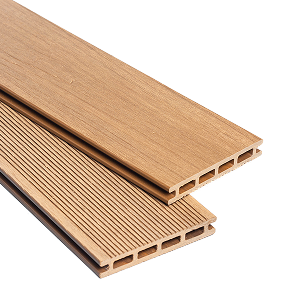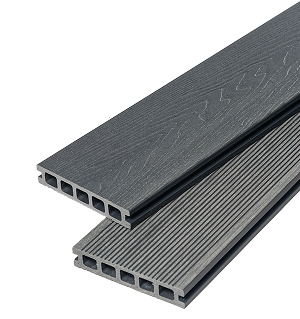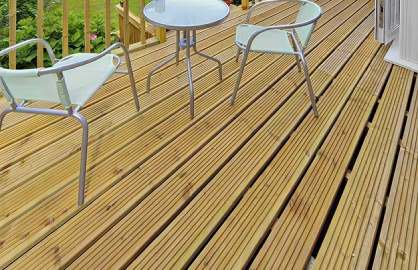 Previous Article
Previous Article
Is Composite Decking Safe & Eco-Friendly? A UK Guide (2025)


Building a deck can be difficult for beginners. You’ll need to decide what materials to use, where to build it, and what type of fasteners to use, among other things. As someone building a timber deck, you have likely asked: should decking boards be installed crown up or down? In this article, we will answer this critical question and explain why it is so important.
When installing most timber decking boards, you must install them crown up.
It is highly important to do this because the natural shape of the crowned board allows water and snow to run off the surface. If you install the boards with the crown down (in a “cupped” shape), it’s a recipe for disaster. Instead of shedding water, the boards will accumulate it, creating puddles on your deck.
Remember to install all the boards crown up, as water pooling can result in splintering and rotting further down the line, shortening your deck’s lifespan.
The bend or “crowning” of a board is not always noticeable. To see which direction the board is crowning, look at the grain on the cut end of the board.

To better understand this, let’s talk about what causes a “crown” in timber.
Crowning and cupping occur in timber decking boards due to moisture absorption. The boards warp across their width, causing the middle of the board to rise higher than the edges (crowning) or for the edges to rise higher than the middle (cupping).
The quality of a timber board and its likelihood to warp depends on how it is cut from the log.
Most timber decking is a mixture of cuts because the trees are not always big enough to cut boards that are specifically one type. You may be able to find boards from specific cuts for hardwoods, as these trees tend to be thicker.

Since crowning is a natural characteristic of timber boards, you may want to use other materials instead. Aside from searching for expensive edge grain hardwood, you can consider getting composite decking.
Composite decking boards are engineered to be straight and uniform. While they do expand and contract with temperature, they are highly resistant to the warping and cupping that affects timber. Capped composite decking in particular has a protective layer that offers an excellent defence against moisture, meaning you will not encounter this problem.
To conclude, you should always install timber decking boards crown up. This will prevent water from pooling on your deck, which causes the timber to deteriorate, resulting in a shorter lifespan. To avoid this problem altogether, you may wish to install composite decking, as this material is highly resistant to warping and cupping.
 Previous Article
Previous Article
Is Composite Decking Safe & Eco-Friendly? A UK Guide (2025)

How to Protect Decking Joists From Moisture in the UK (2025)